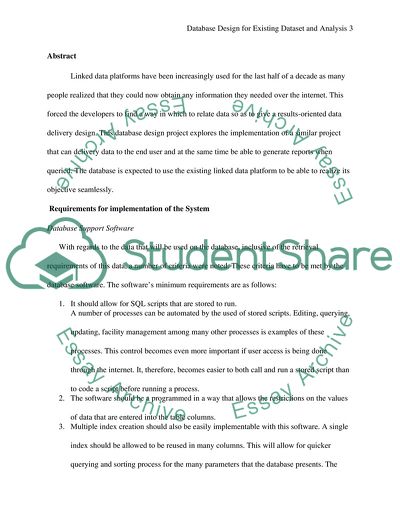Cite this document
(Database Design for Existing Dataset and Analysis Business Plan Example | Topics and Well Written Essays - 3000 words, n.d.)
Database Design for Existing Dataset and Analysis Business Plan Example | Topics and Well Written Essays - 3000 words. https://studentshare.org/information-technology/1861477-db-design-for-existing-dataset-and-analysis-a
Database Design for Existing Dataset and Analysis Business Plan Example | Topics and Well Written Essays - 3000 words. https://studentshare.org/information-technology/1861477-db-design-for-existing-dataset-and-analysis-a
(Database Design for Existing Dataset and Analysis Business Plan Example | Topics and Well Written Essays - 3000 Words)
Database Design for Existing Dataset and Analysis Business Plan Example | Topics and Well Written Essays - 3000 Words. https://studentshare.org/information-technology/1861477-db-design-for-existing-dataset-and-analysis-a.
Database Design for Existing Dataset and Analysis Business Plan Example | Topics and Well Written Essays - 3000 Words. https://studentshare.org/information-technology/1861477-db-design-for-existing-dataset-and-analysis-a.
“Database Design for Existing Dataset and Analysis Business Plan Example | Topics and Well Written Essays - 3000 Words”. https://studentshare.org/information-technology/1861477-db-design-for-existing-dataset-and-analysis-a.


